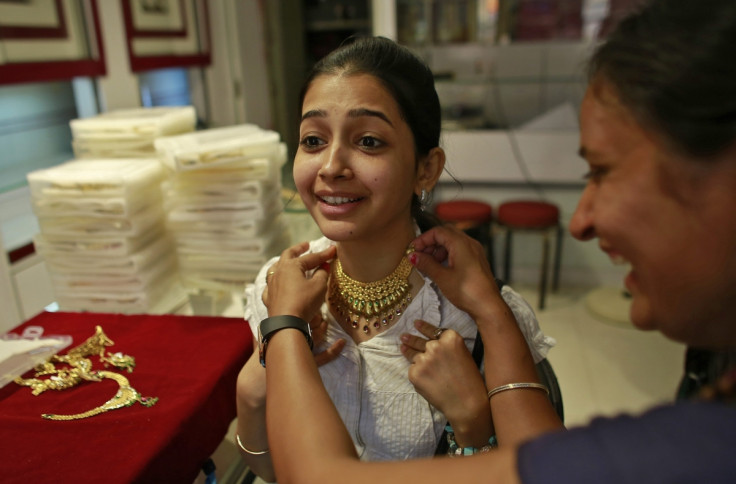Gold Jewellery: Chinese and Indian Consumers Calm Down After Mad Rush for Cheap Bling

Chinese and Indian demand for gold jewellery has tumbled as output growth in both of the developing powerhouse economies falters and consumers take "a more 'needs' based approach".
The World Gold Council (WGC), which works on behalf of the industry, said global demand for jewellery made from the precious metal slumped by 30% on an annual basis to 509.6 tonnes in the three months to the end of June 2014. Jewellery accounts for around half of all gold demand.
During the period, India and China purchased 154t and 143t respectively of gold jewellery, representing annual falls of 50% and 48%. In the same quarter in 2013, India had purchased 310t and China 276t as consumers reacted to a sharp decline in gold prices by buying up jewellery.
"In what is traditionally a quieter quarter for jewellery, consumers continued to digest opportunistic purchases made in 2013 and adopted a more 'needs' based approach to their jewellery buying," said the WGC report.
"Indian jewellery buying was also affected by high value purchases being restricted in the run up to the election and the continued impact of import restrictions on gold."
Fast-growth China is set to soon overtake the US as the world's largest economy. But GDP growth has slowed sharply from 9.2% in the first quarter of 2012 to 7.5% in the second quarter of 2014 as President Xi Jinping embarks on structural reforms to the economy and cuts back on stimulus.
China has a rapidly expanding middle class as the prosperity of the 2000s begins to filter down to the masses, raising incomes significantly and giving many ordinary Chinese disposable cash to spend on non-essentials such as jewellery.
Meanwhile, Indian GDP has also slowed sharply from 7.5% in the second quarter of 2011 to 4.6% in the same three month period in 2014. The value of the rupee plunged and India's current account deficit widened, while investors pulled cash out and put it back into recovering Western economies such as the US.
To limit the damage to its current account deficit, India had limited gold imports by lifting taxes and demanding that importers keep back a fifth of the precious metal to re-sell as jewellery exports. As the economic difficulties eased in the beginning of 2014, Indian officials began to relax some of their curbs on gold imports.
"In the context of an exceptional year last year where we saw record consumer buying and investor sell-offs, this quarter's demand continues to demonstrate a return to long-term trends, illustrating the uniquely balanced nature of the gold market," Marcus Grubb, managing director of investment strategy at the WGC, said.
"Jewellery consumers continued to digest the exceptional purchases of 2013 and investors also rebalanced, pulling back from the extremes we saw last year. Overall the gold market is stabilising following the extraordinary conditions we saw in 2013."
Gold prices fell sharply across 2013 as investors in the commodity, seen as a reliable safe haven for cash in times of financial crisis, put their money back into stocks, shares and bonds as economic recovery took hold in the likes of the US and UK.
© Copyright IBTimes 2025. All rights reserved.






















